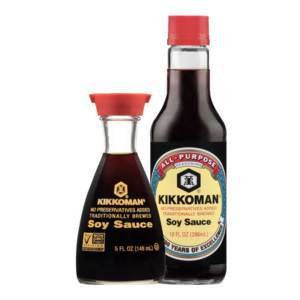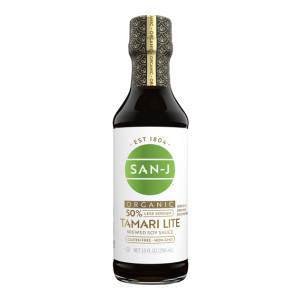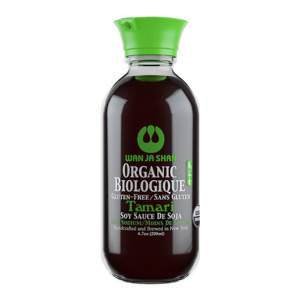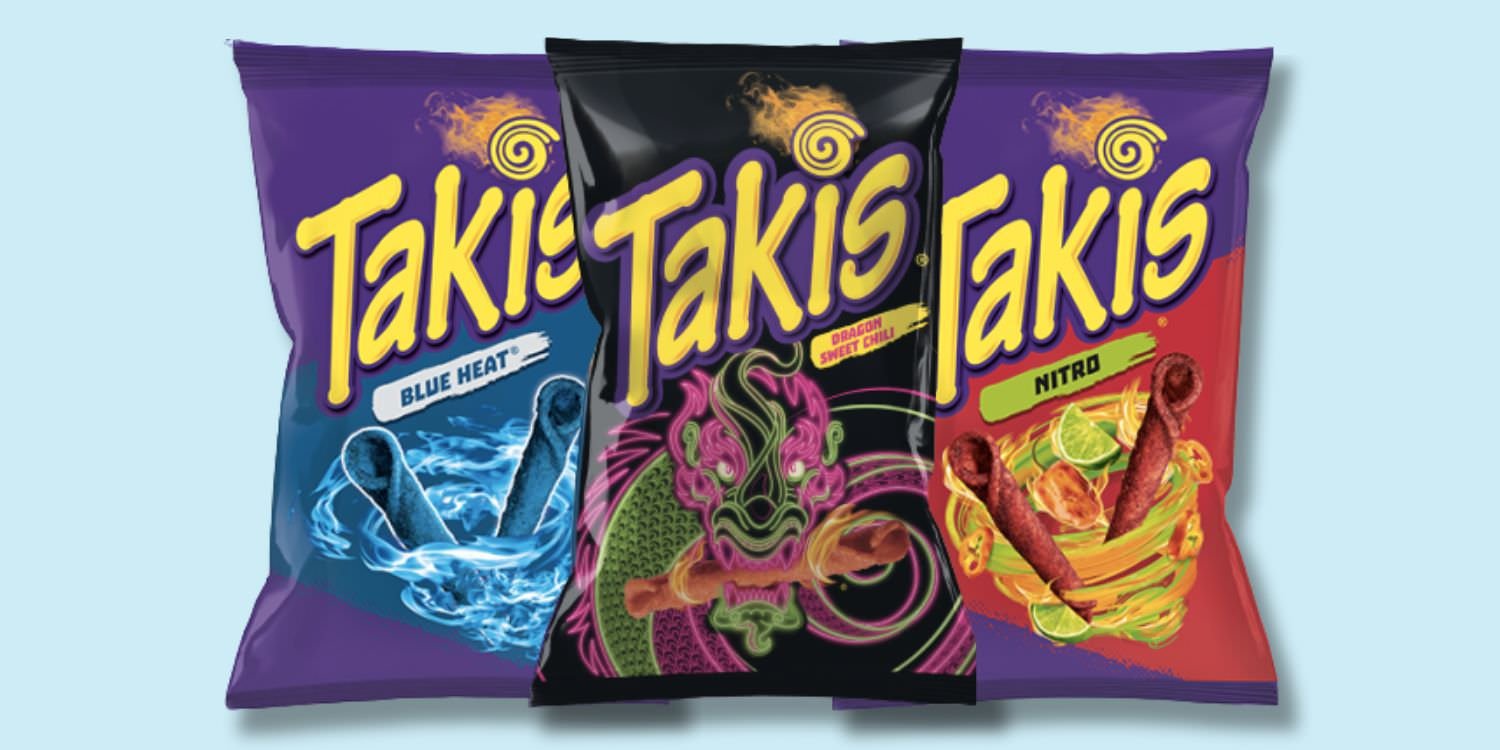Is Soy Sauce Vegan? Let's Explore This Condiment
Wondering if you can keep enjoying your soy sauce guilt-free on a vegan lifestyle? You'll be glad to know that soy sauce is traditionally made without animal products! This condiment is a fabulous addition to vegan dishes in terms of taste, to help deepen the flavors of your authentic Asian meals.
However, with thousands of brands offering this popular condiment, it's impossible to confirm that all commercial versions are vegan-friendly. If you want to find out how to find a vegan soy sauce that fits your dietary needs and preferences, keep reading!
What Is Soy Sauce?
Traditionally, soy sauce is a fermented liquid condiment made of soybeans, wheat, salt, water, and yeast. It was developed around two thousand years ago in China and later introduced to other East Asian countries like Japan, Indonesia, South Korea, and China.
This sauce is very salty and used in small amounts as a condiment to flavor a large percentage of traditional Asian dishes. You'll find it used in fried rice, noodles, stir-fries, sushi, soups, dipping sauces, and more!
Most Popular Types of Soy Sauce
The traditional soy sauce is the five-ingredient fermented version mentioned above. However, when it was introduced to other regions, variations were developed for different culinary purposes. Some are thicker, sweeter, lighter, or darker to give each dish a specific look and flavor.
There are Korean and Indonesian soy sauces like Yangjio Ganjang (made with soybeans and rice, wheat, or barley and less sodium) and Kecap Manis (thicker and sweeter, sweetened with palm sugar), but for the purposes of this article we're focusing on the most popular Chinese and Japanese varieties. Keep reading to learn more about the main types of soy sauce and how each is used.
Traditional Soy Sauce
'Traditional' soy sauce refers to those made via fermentation with water, soybeans, wheat, salt, and a fermentation agent. This version is also known as 'naturally brewed' soy sauce, as opposed to chemical soy sauce. Depending on the quality, it'll have been fermented for at least a few months, or ideally, over two years!
Light Soy Sauce
Light soy sauce is one of the two major types used in Chinese cooking. However, in Japanese cuisine, it's called 'usukuchi' soy sauce. This variety is light in color and milder in flavor, although it's actually higher in sodium. It's typically used to season foods that require a lighter colored sauce like white vegetables, fish, or chicken.
Dark Soy Sauce
The other major type of soy sauce used in Chinese cooking, dark soy sauce is produced using equal amounts of soybeans and wheat. When dealing with Japanese soy sauces, this variety is called 'koikuchi'. It's actually the most commonly used soy sauce in both Chinese and Japanese cooking! Dark soy sauce boasts a strong aroma and a dark color. It's also thicker and slightly sweeter than light soy sauce. This variety is often used for marinades, sauces, rice, noodles, and stir-fries.
Shiro Shoyu Soy Sauce
Shoyu sauces are Japanese soy sauces. Shiro shoyu soy sauce is made with eighty percent wheat and twenty percent soybeans. It's the lightest in color, resembling a white wine. This variety is the best for clear soups and light-colored foods.
Saishikomi Soy Sauce
Sweeter and considered high-end, 'saishikomi' soy sauce is typically used as a dipping sauce for sushi. Use it for plant-based rolls, or poke bowls!
Tamari Soy Sauce
There is little to no wheat used in tamari. It's technically not even a soy sauce, but instead a by-product of miso production. So, it's often gluten-free, but now always. Simply check the label if you need to make sure it's gluten-free!
Tamari is amazing for sushi and light dipping/stir-fry sauces, and is sometimes even mixed with soy sauce to enrich its flavor.
Liquid Aminos
Liquid aminos are not a type of soy sauce, but are commonly used as a healthy alternative. This condiment can be made with soybeans or with fermented coconut sap. It's completely gluten-free, preservative-free, and higher in protein!
Key Ingredients Used in Commercial Soy Sauce
Although soy sauce is traditionally made with just a handful of natural ingredients, this is not always the case on a commercial level. Most soy sauce brands also use flavoring agents and synthetic colors to enrich their taste and appearance.
While traditional soy sauce requires years of fermentation, commercial soy sauce is often produced chemically using HCI (hydrochloric acid) and artificial colors/preservatives. Discover some of the main ingredients used in commercial soy sauce below.
Soybeans
This ingredient is, unsurprisingly, used in all traditional soy sauces. However, many individuals are concerned about the health consequences of excessive soy consumption. In the past, it had been theorized that soy increases estrogen levels, due to its phytoestrogen content. This was a concern especially for women, since high estrogen levels are associated with a higher risk of breast cancer.
Newer studies have actually found that soy consumption can help to reduce the risk of breast and colorectal cancer, among other health benefits. That's because the phytoestrogens bind to estrogen receptors, blocking the real estrogen, thus lowering estrogen levels.
That said, regular soy sauce is not for those with a soy allergy or sensitivity. These individuals should avoid soy sauce entirely, or opt for soy-free coconut aminos, instead.
Wheat Flour
There is technically no such thing as traditional gluten-free soy sauce, as it's always been produced with wheat flour. Some commercial varieties are now made gluten-free, but these are much more similar to tamari. Tamari is usually gluten free, but not always. So, you'll always want to check the label and ingredient list if you're looking for a gluten-free swap.
HCI
HCI stands for hydrochloric acid. It helps to greatly accelerate the fermentation process by breaking down the soybeans. This process is known as hydrolyzing. HCI is used in all chemical soy sauces.
You can easily identify chemical soy sauce because it sticks to the ends of your chopsticks in thick droplets. Chemical soy sauce also offers a plain salty flavor, while naturally brewed soy sauce boasts a complex flavor profile and aroma.
Salt
Excessive sodium is the biggest health concern with soy sauce. A higher sodium intake is associated with serious heart conditions like hypertension (high blood pressure). So, you'll need to limit your consumption of soy sauce due to its elevated sodium content. You can dilute your soy sauce with a bit of water to reduce the sodium content when adding it to rice or sauces.
Flavoring Agents
Soy sauce may often contain flavoring agents like MSG, yeast, or others. Despite MSG's dark reputation, more info is needed to confirm its negative health effects. In fact, it's actually naturally occurring in several plant and animal-based foods, including tomatoes and nutritional yeast!
Caramel Color
Caramel color gives some soy sauce products their signature color, or deepens their color. While not harmful itself, caramel color can sometimes form 4-methylimidazole, a known carcinogen, during its production process. So, you may prefer to opt for brands that omit this ingredient, to be on the safe side.
Artificial Preservatives
The preservatives frequently used in soy sauce include potassium sorbate or sodium benzoate. These preservatives are generally considered safe in the amounts used in food products. However, there are preservative-free soy sauces available as well, for those who prefer to stay away from synthetic additives. Organic varieties are also free from artificial preservatives.
Is Soy Sauce Vegan?
Luckily, soy sauce is almost always vegan. However, certain popular soy sauce brands may utilize animal testing to develop their products, so you'll want to watch out for this. As for its ingredients, you mainly need to watch out for seafood-flavored varieties made with fish products, and certain flavor enhancers that could come from animal sources. It's always a good idea to check the label for a vegan logo or certification before purchasing. You can always go for those with only four to five basic ingredients to be absolutely sure of what you're consuming.
Is Soy Sauce Healthy?
Although soy sauce is made without animal ingredients, this doesn't mean it's healthy. It's infamous for containing extremely large amounts of salt, so varieties with reduced sodium are generally healthier and widely encouraged.
You can additionally try to go for brands that don't use caramel color, and brew their soy sauce naturally. Non-GMO or organic soy sauce can also be a smart choice, as most soybeans are genetically modified and grown with harmful pesticides.
Healthier Vegan Soy Sauce Alternatives
(Non GMO - Low Sodium - Preservative Free - Gluten Free )
Looking for a slightly healthier vegan soy sauce to switch to? More and more popular high-quality brands are producing non-GMO, low-sodium, preservative-free, and even gluten free varieties for those with sensitivities and health concerns. Check them out below!









